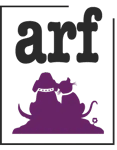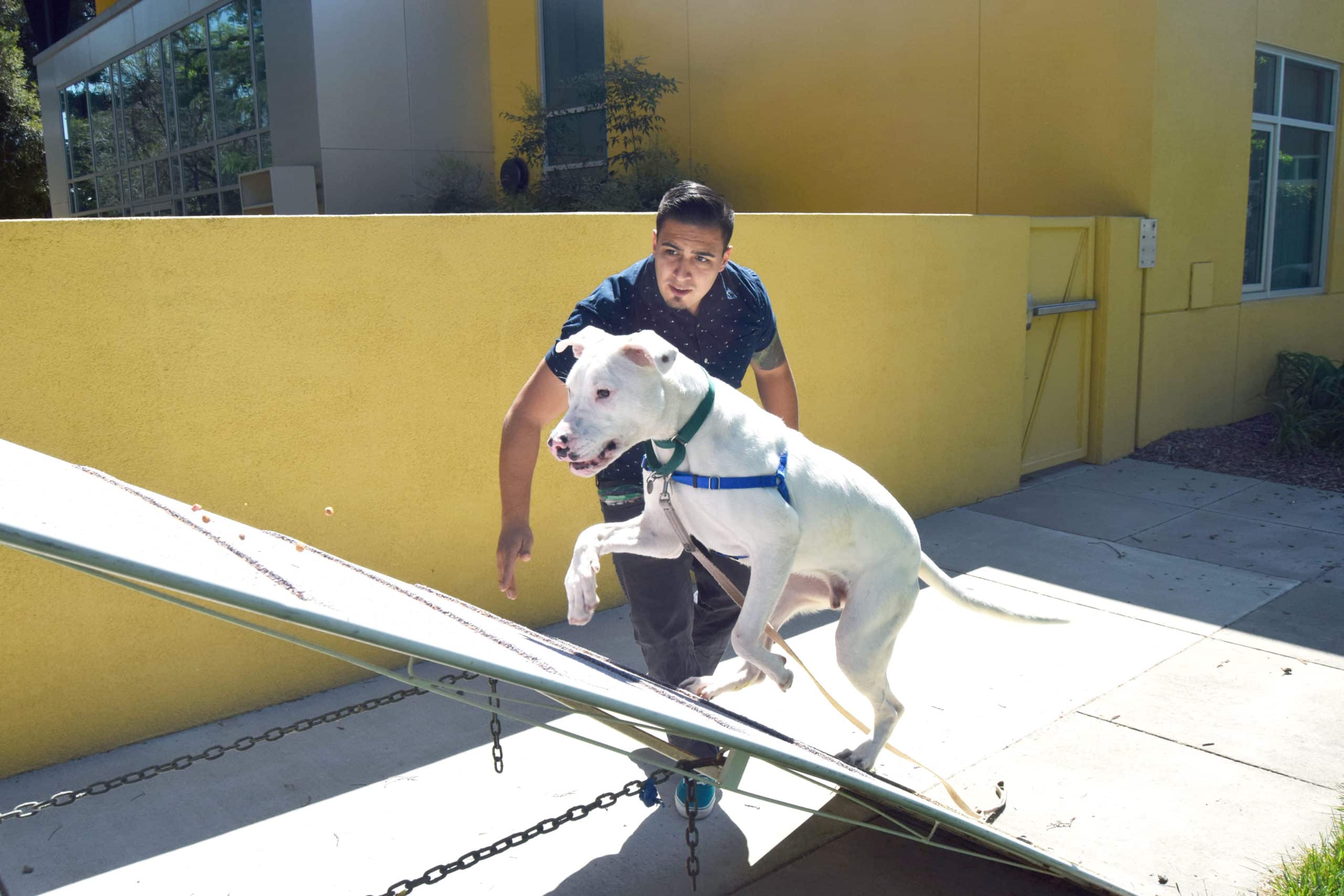Housetraining is all about teaching your dog the right place to eliminate and rewarding them for doing so. Sounds so simple, right? Well this process takes time and repetition. Even if a dog has a history of housetraining in their previous home, they will likely need a bit of a refresher course.

Supervision and Management
By supervising your dog, you’ll be able to clue in to their “pre-potty routines” and intervene before they eliminate in unacceptable areas. You’ll need an appropriate area to comfortably confine them when unsupervised. You can use a crate (if the dog is completely crate trained), a small room with easy to clean floors, such as a laundry room or small bathroom, or an area partitioned with an exercise pen or baby gate. Because dogs typically do not like to soil their living/sleeping space, you have a better chance of them holding it until they can get to a bigger space. If your dog does soil this room, the easy to clean floors make it less damaging and less frustrating to clean up.
Potty Party!
Pick a spot in your yard or in your neighborhood where you want your dog to eliminate. Take your dog to the spot and hang around nonchalantly for 3-5 minutes. If your dog eliminates, they get a party of their favorite treats and attention! Eliminating while on-leash is not a requirement, but it will make it easier to ensure that you are able to deliver their reward in a timely manner. Timely reinforcement is the key to teaching them the right place to go to the bathroom.
Keep Track
Each dog “goes” on a different schedule, but most dogs will urinate first thing in the morning and defecate within 30 minutes of eating. By keeping your dog’s feeding schedule consistent, you can better prepare your schedule for optimal training. Other factors like water consumption, playing, exercising, and sleeping will also influence potty habits. When you first begin training with a new dog, learn their schedule by taking them outside to eliminate every hour or so and note when the dog eliminates. You should start to see a pattern in most adult dogs. Puppies have smaller bladders and will need to eliminate more often. The general rule is that a puppy can “hold it” 1 hour for each month it is old. So a 4 month old puppy may be able to hold it for 4 hours. Making any dog “hold it” for longer than 7-8 hours is not fair, so plan your family schedule accordingly.
We suggest actually keeping a log of their potty habits and other correlating activities. A physical log will help you visualize trends and patterns in your dog’s potty preferences. A log hanging in a popularly used space of the house can be useful in homes with multiple caregivers. Below is an example of such a log:
| DATE/TIME | ACTIVITY | LOCATION | ABLE TO INTERRUPT? | GETTING IT RIGHT? |
|---|---|---|---|---|
| Sunday – 9:00 pm | Buster went #1 & #2 | Backyard | YES | |
| Monday – 8:00 am | Buster ate breakfast | Kitchen | ||
| Monday – 8:30 am | Buster went #1 | Kitchen | YES | |
| Monday – 8:35 am | Buster went #1 & #2 | Backyard | YES | |
Accidents
If your dog does have an accident, don’t punish or scold your dog, just clean it up (with an enzymatic cleaner such as Nature’s Miracle®) and make a note about when the dog may have eliminated. Add that piece of information into your log and plan accordingly next time. Make a plan for better management whether that means confining them to space, limiting access to accident areas, or devoting your full attention to them as they have access to new areas.
Punishing the dog after the fact can damage your relationship with your new dog or can lead to the dog being too nervous to eliminate in front of you. This can be detrimental, often leading to a long, long dog walk, with no “output.”
If your dog suddenly needs to go more often or housetraining problems suddenly arise after a long stint of success, make sure to rule out medical causes by visiting your veterinarian.
Submissive Urination
Submissive urination is when a dog urinates because they are excited or nervous. This often occurs when you come home, reach to pet them or if something frightens them, like a loud noise. This is not a housetraining problem. The best thing you can do is ignore the dog as you come home and limit startling noises or reaches. It’s often best to calmly walk the dog outdoors, allow them to urinate naturally and then you can greet and play like usual.
Indoor Marking
Marking is when male or female dogs urinate in small quantities in multiple spots. Standard housetraining procedures should be used to eliminate indoor marking: three weeks of supervision in the house or limited to a small, easily cleaned area, interrupt before marking and hustle outside to the potty spot, praise and rewards for marking outdoors, and never punish marking indoors. After three weeks without mistakes, you can begin to loosen your management but continue to supervise your dog each time they have more access inside the home.
Some pre-cursor marking behaviors to remain aware of are extensive sniffing – for male dogs, you might notice this sniffing to be at or around shoulder height. Watch for the dog sidling up to an item, this might look like moving alongside the item, keeping the shoulder in line with the item that they might be preparing to mark.



